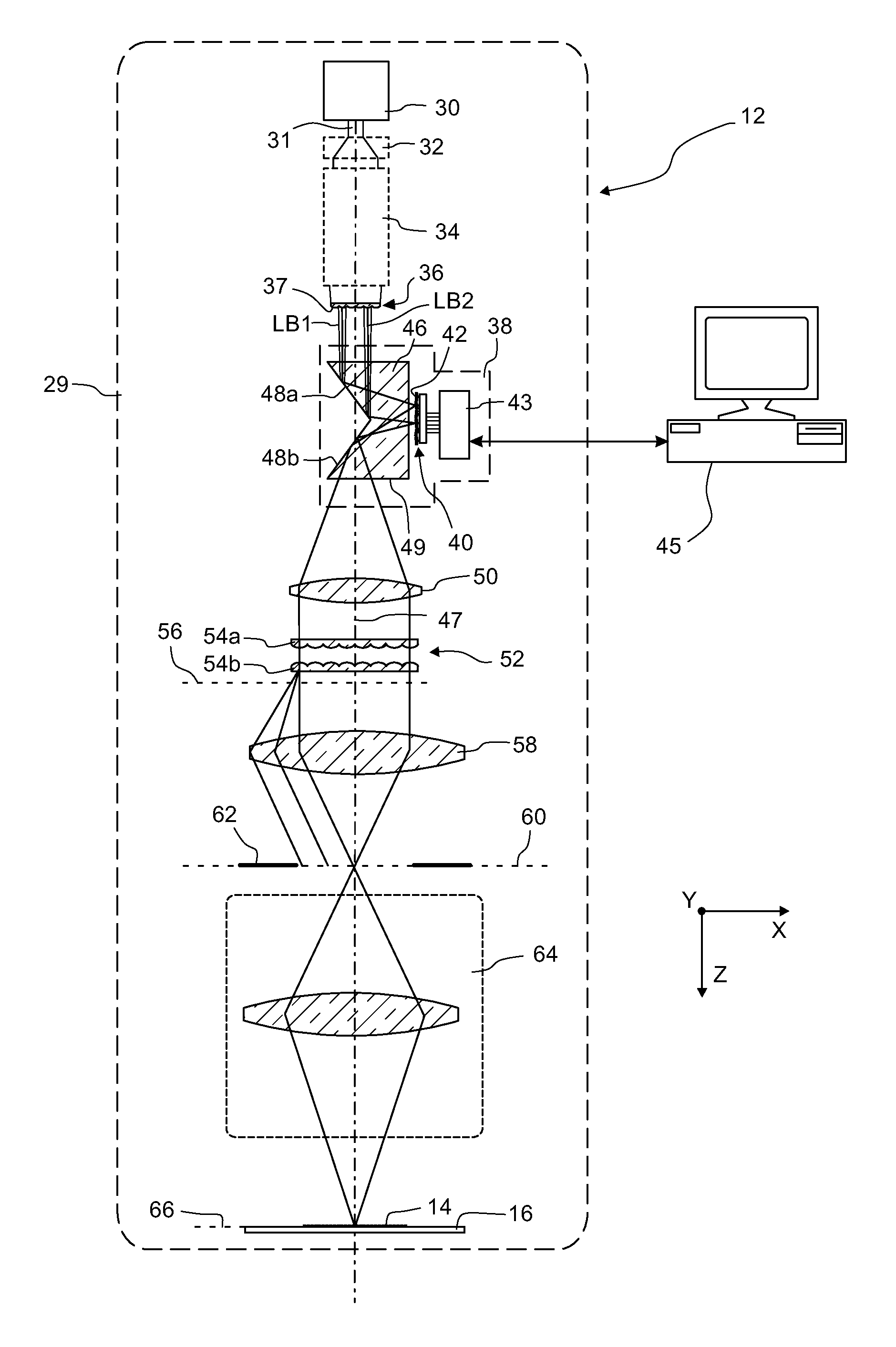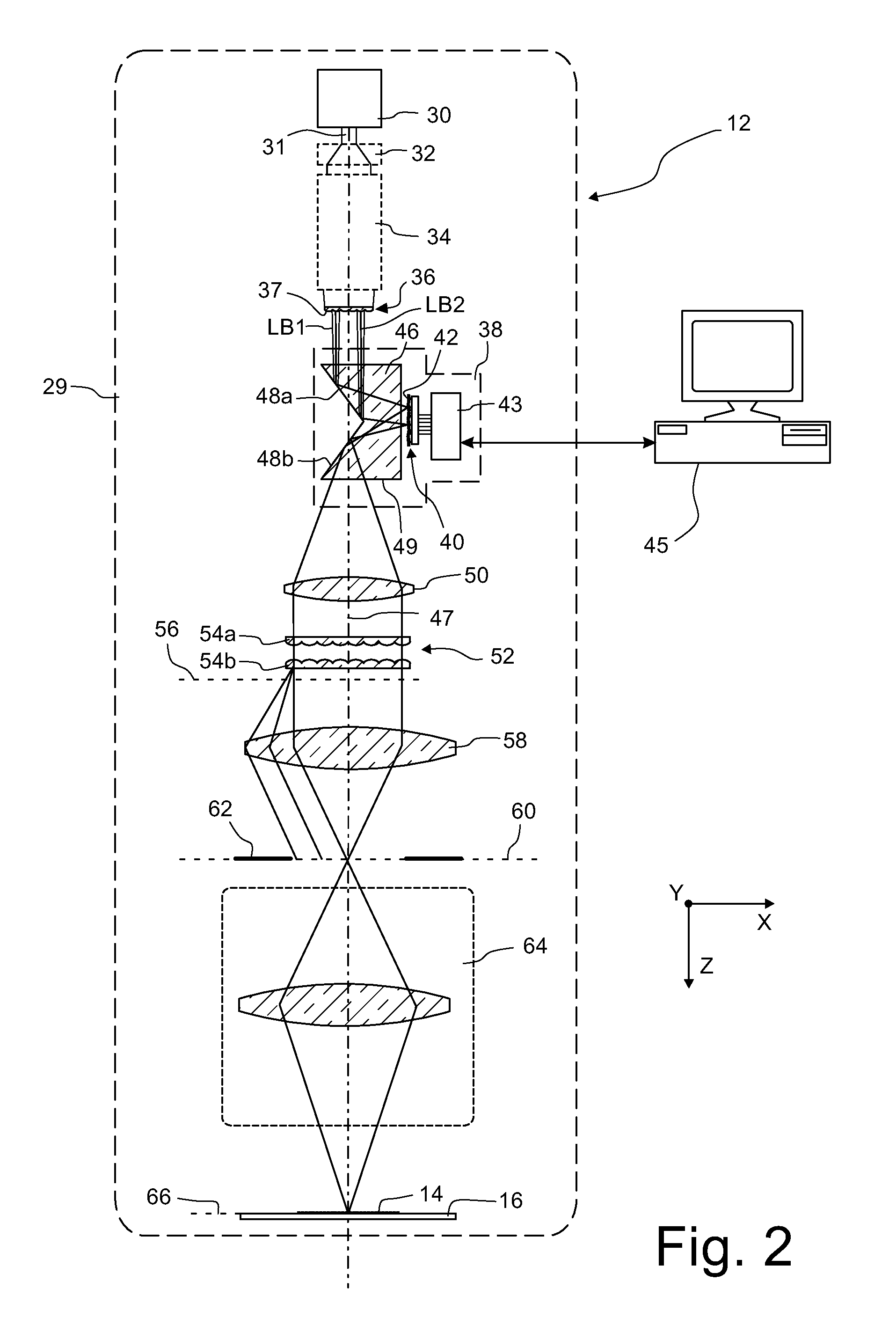Illumination system of a microlithographic projection exposure apparatus
- Summary
- Abstract
- Description
- Claims
- Application Information
AI Technical Summary
Benefits of technology
Problems solved by technology
Method used
Image
Examples
examples
[0105]FIG. 13 is a graph which illustrates for various combinations of pitch p and second focal length f2 which ratio d / f2 should be used to obtain the above described compensation. Here it is assumed that the wavelength λ equals 193 nm and the homogenizing optical integrator is symmetric, i.e. f1=f2. The waviness of the curves reflect the periodic nature of the diffraction orders.
[0106]FIG. 14 shows the result of computations in which the ratio d / f2 is indicated depending on the number k as defined by equation (1). It can be seen that the smaller the parameter k is, the larger the defocus d / f2 of the first optical raster plate 74 has to be.
[0107]Table 1 contains an example of numerical values for an optical integrator in accordance with the present invention.
[0108]The lens height h is defined as the height of the curved surface of the second lenses 84. As a result of the long focal length f2, the height h is extremely small as compared to the distance d.
TABLE 1Wavelength λ 193 nmPi...
PUM
 Login to View More
Login to View More Abstract
Description
Claims
Application Information
 Login to View More
Login to View More - R&D
- Intellectual Property
- Life Sciences
- Materials
- Tech Scout
- Unparalleled Data Quality
- Higher Quality Content
- 60% Fewer Hallucinations
Browse by: Latest US Patents, China's latest patents, Technical Efficacy Thesaurus, Application Domain, Technology Topic, Popular Technical Reports.
© 2025 PatSnap. All rights reserved.Legal|Privacy policy|Modern Slavery Act Transparency Statement|Sitemap|About US| Contact US: help@patsnap.com



